I’m always on the lookout for sweatshirt patterns with interesting design details, and the Wren fleece by Daughter Judy patterns does not disappoint. I’ve made the pattern 5 times, and it’s a good example of how fabric choice can dramatically change the outcome. In today’s post, I’ll show you my most and least successful versions (and a few in between).
Design and fit
The Wren is designed to be generously oversized. It has an exaggerated yoke on front and back, which is the centerpiece of the design. The sleeves are slightly cropped with a deep box pleat to create volume.
I’ve seen elements of this design from a few different brands lately, mostly Babaa and Rachel Comey. Here are a few images from my Wren mood board:
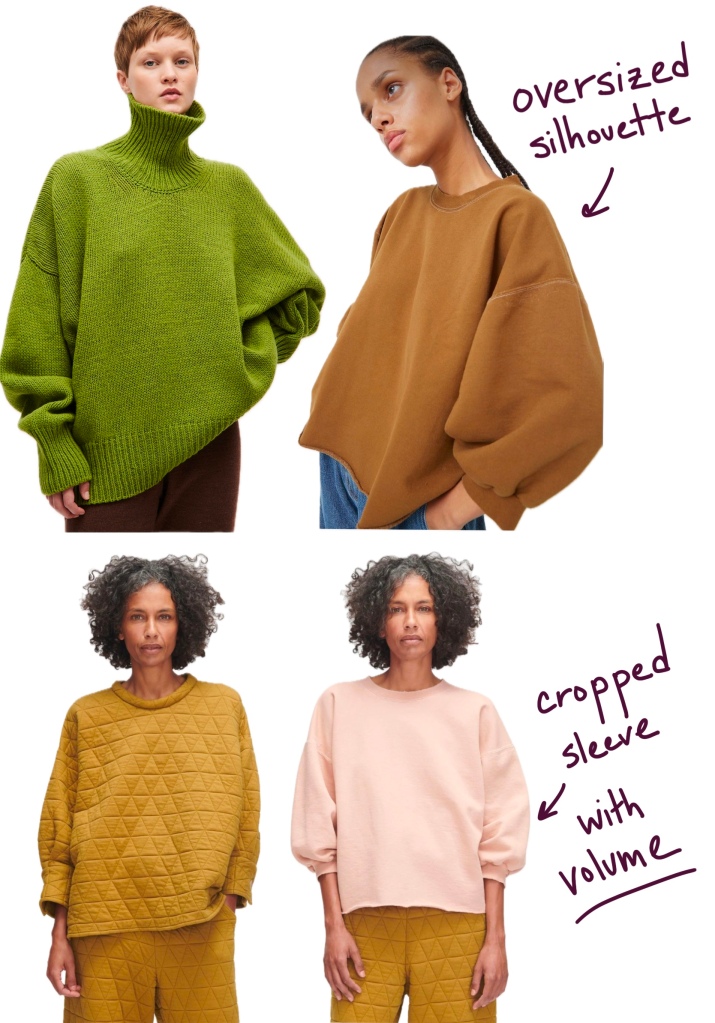
For me, the cropped sleeve is what keeps the oversized volume of the Wren in check. Showing just a little bit of skin at the wrist balances all that fabric in the body, and it makes all the difference for the silhouette.
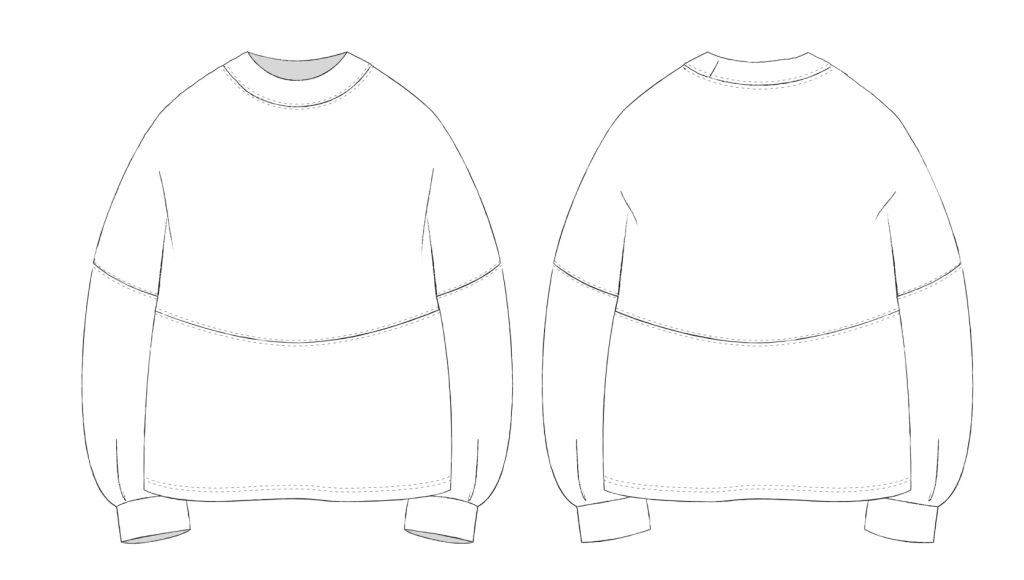
I always wear my sweatshirts and fleeces pushed up to the elbow, so the bracelet length sleeve is the perfect length for me. If you want your wrists to be warmer, I’d recommend double checking the neck to wrist measurement along the sleeve before you cut your fabric.
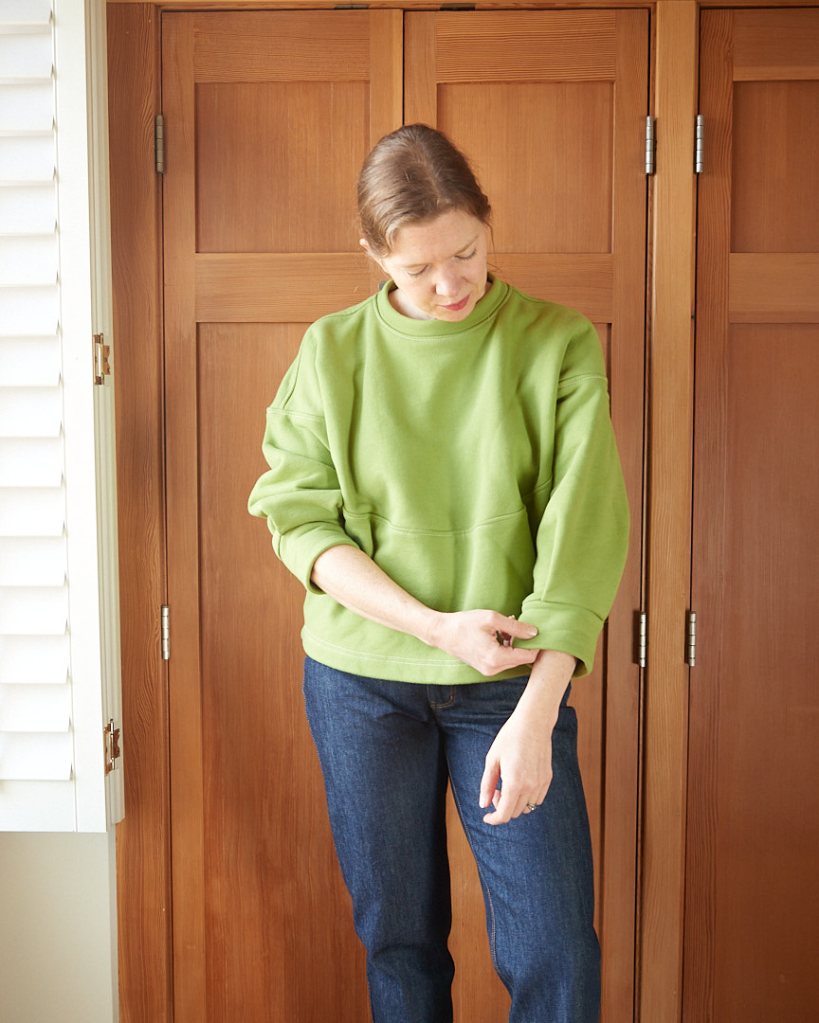
Sizing and fabric choice
The Wren is a chameleon; the look will dramatically change depending on what fabric you choose and what size you cut. The best way to illustrate this is to show you. Please enjoy this tour of my Wren collection!
My measurements are 39″ chest and 42″ hip, which puts me in a size large. However, for this pattern there is so much ease that I could easily fit into the smallest size and still have 14 inches of ease at the chest. So size selection has more to do with your fabric choice and your desired silhouette.
Heavyweight fabric, size L
My favorite version is the apple green Wren (size L), which I made out of a heavyweight 100% cotton fleece. This fabric is a whopping 916 gsm, or 27 oz, which is THICK. I had to use my semi-industrial straight stitch machine to construct this garment because multiple layers simply would not fit under the presser foot of my serger.
This fabric has 15% stretch, but it is so thick that I had to enlarge the neck opening to the size XL to fit my head through comfortably. Similarly, I also enlarged the cuff circumference by about an inch so that I could comfortably push my sleeves up to my elbows. This also meant reducing the box pleat, but since it is deep to begin with, I didn’t lose much volume in the sleeve.
I love the silhouette created by the thicker fabric — it’s more sculptural than the lightweight versions I’ve made. I added some hefty topstitching to emphasize the design lines even more, and I’m very happy with it. It feels like wearing a cozy blanket.
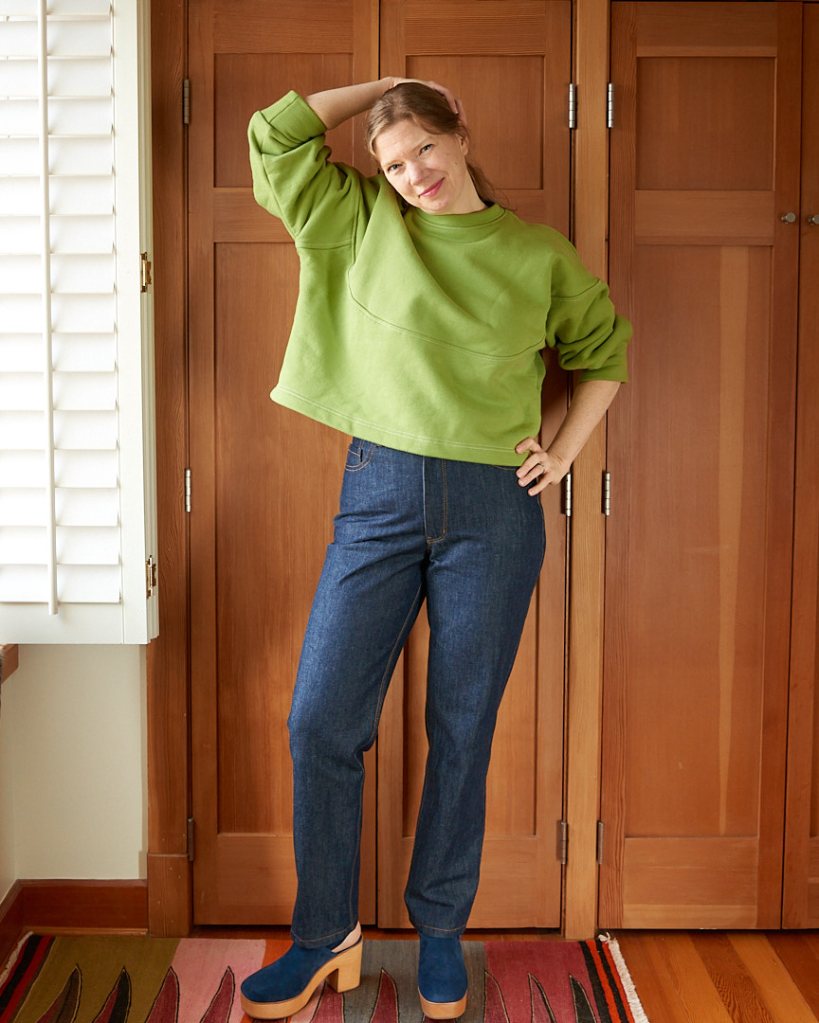
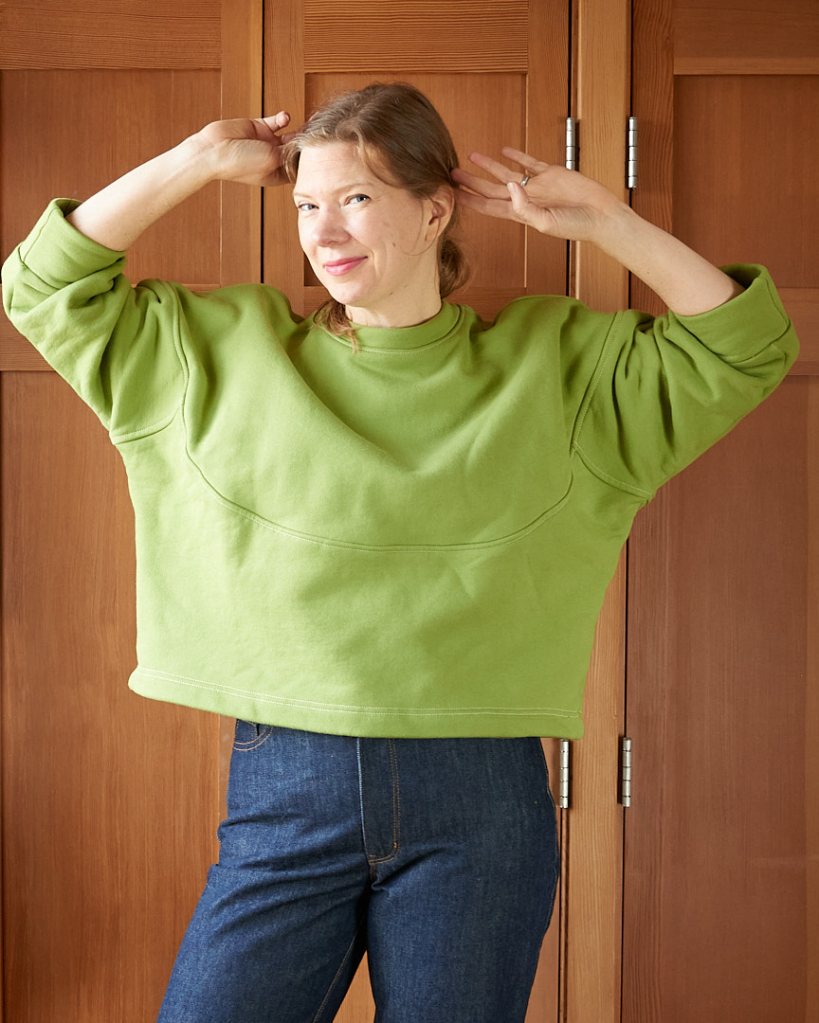
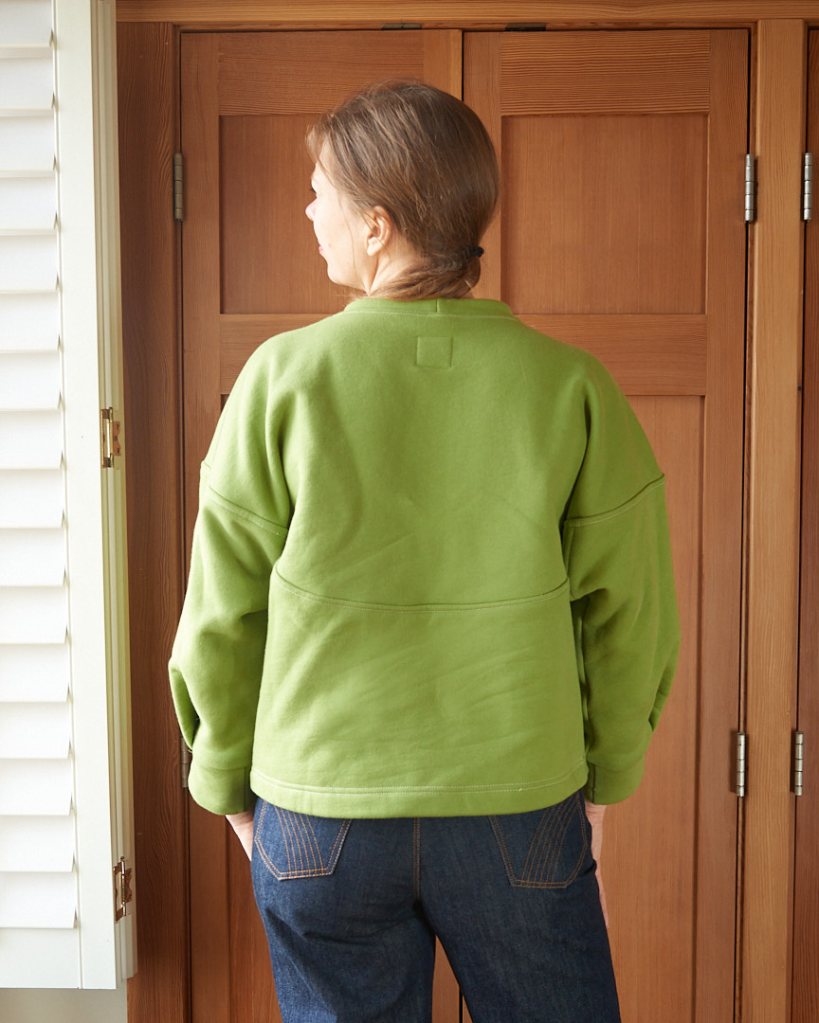
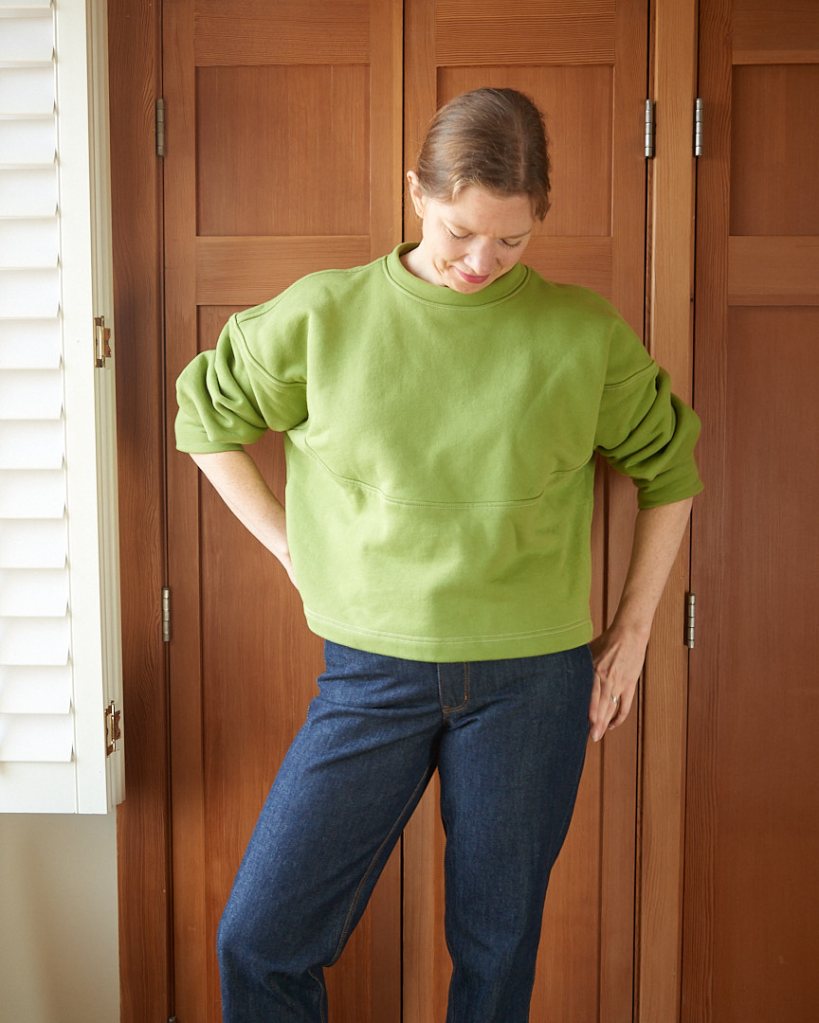
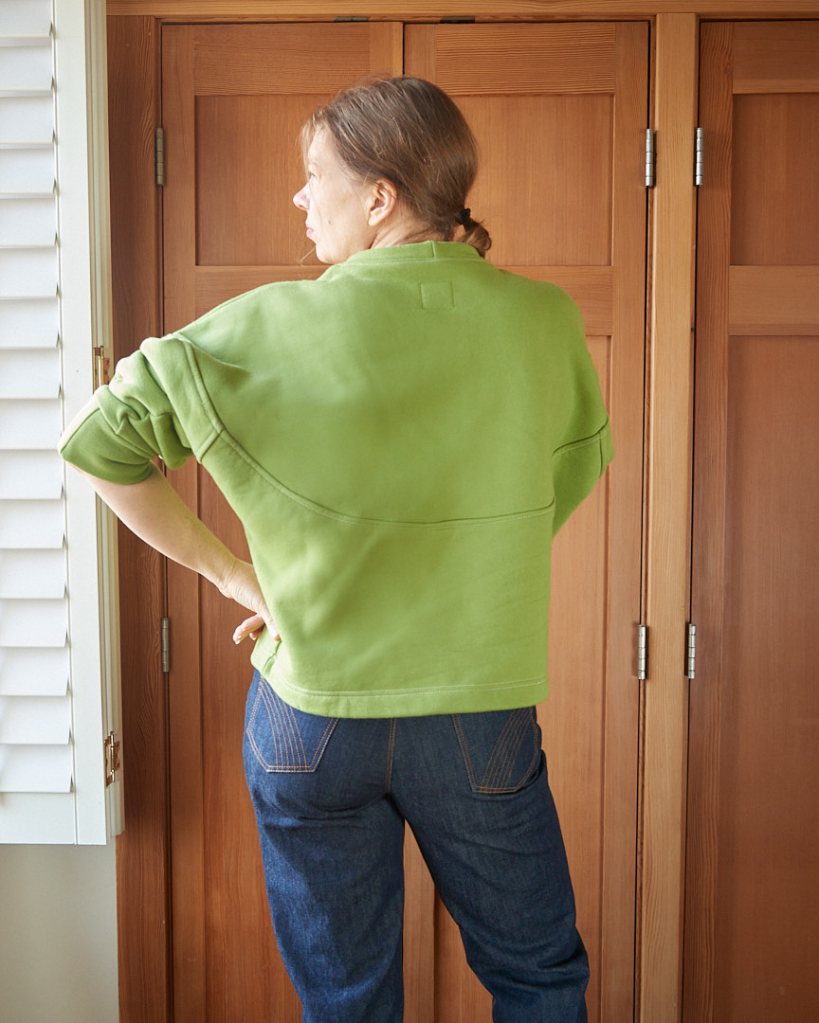
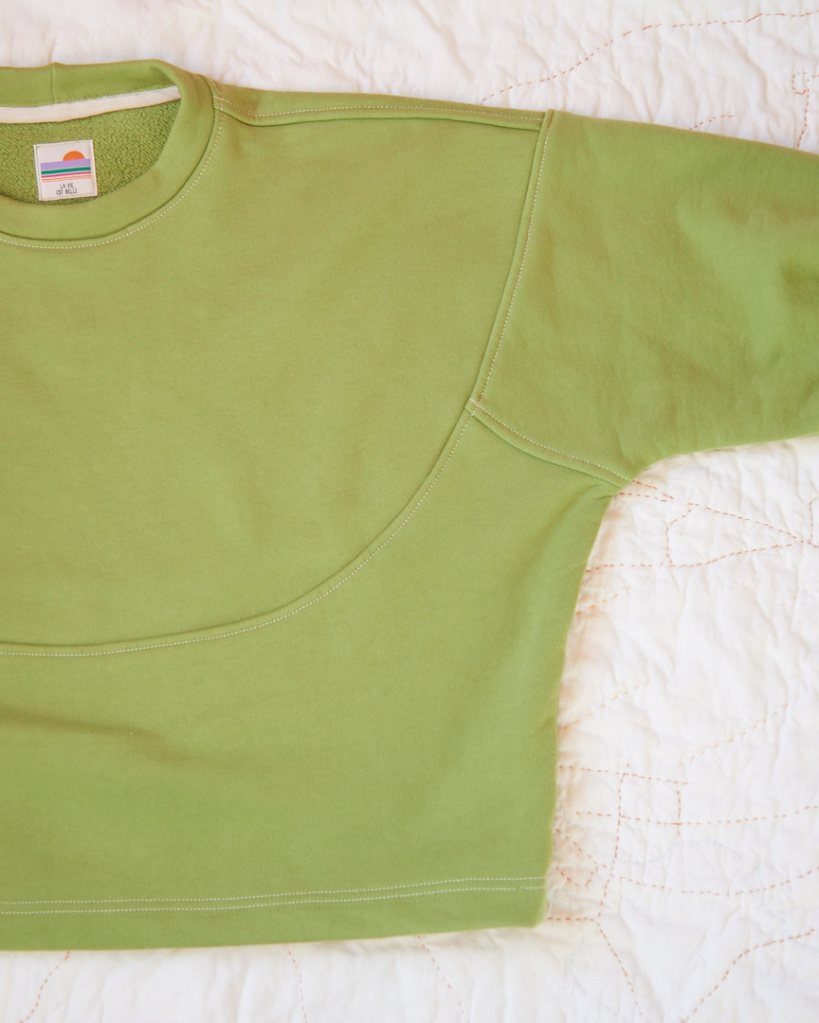
Lightweight fabric, size L
Switching the fabric alone resulted in my least favorite version of Wren. I made a second Wren using 270 gsm (8 oz) sweater knit, a popular weight for sweatshirting and less than a third of the weight of the first. It’s comfy for lounging but I don’t wear it out of the house. The lighter weight fabric doesn’t hold the volume as well, and the design is lost. Perfectly wearable, but it looses all of it’s character.
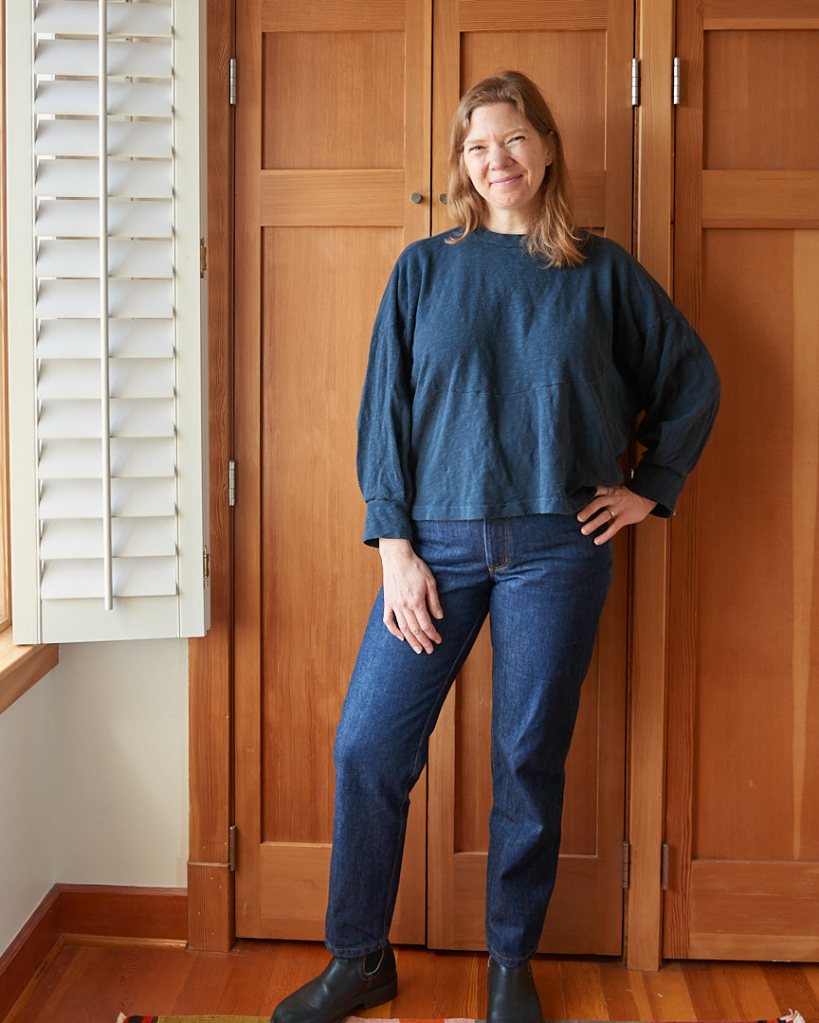
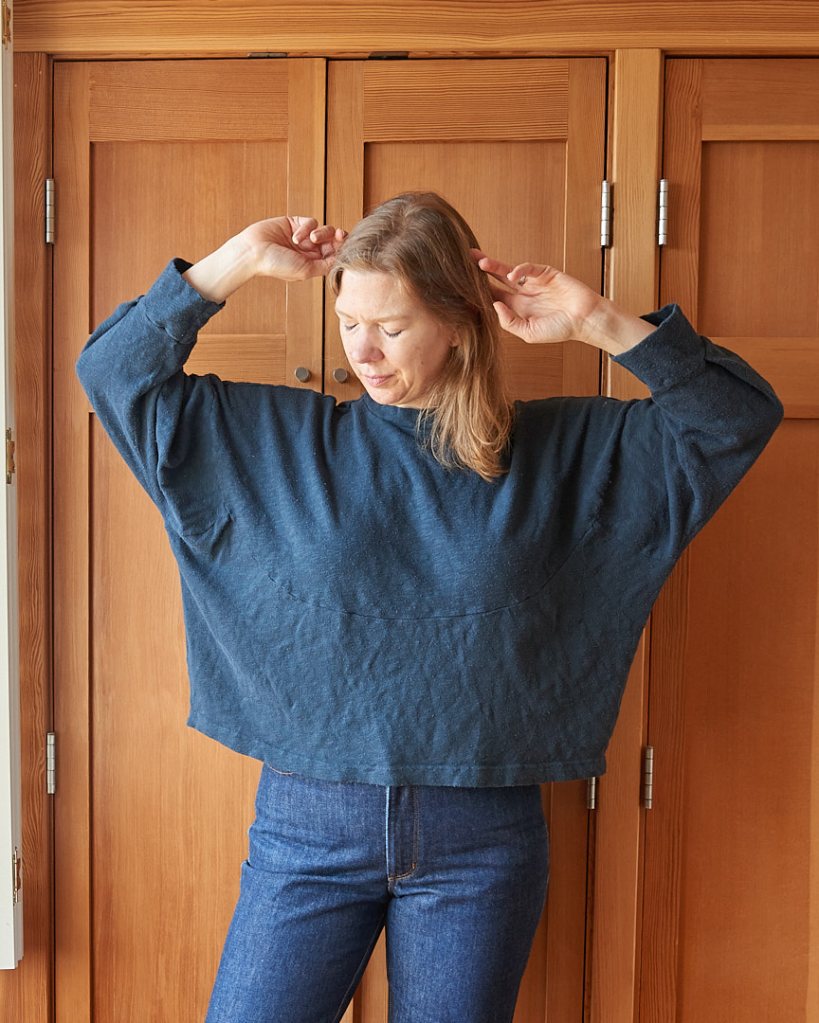
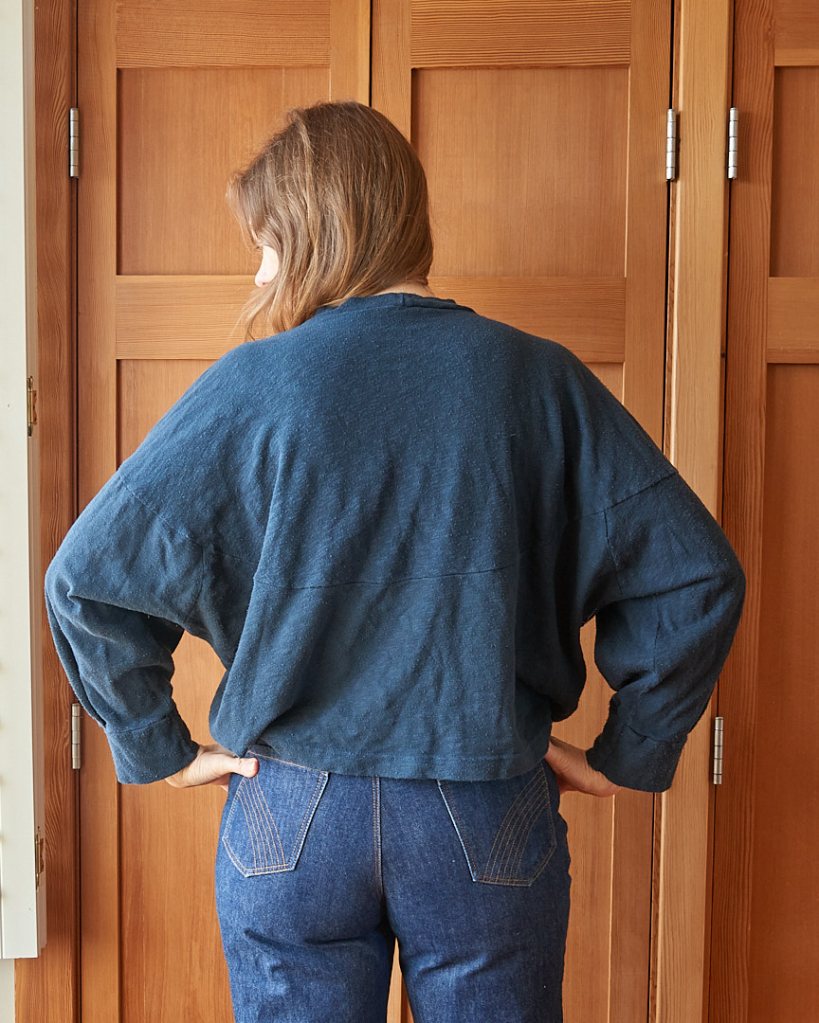
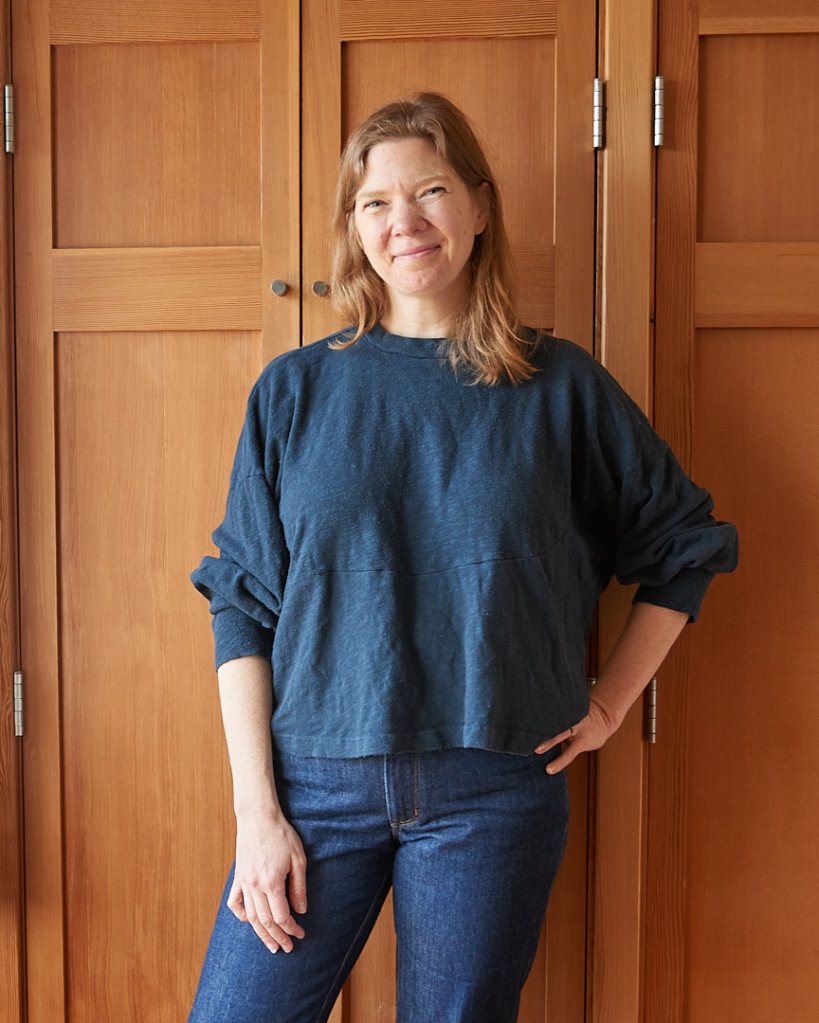
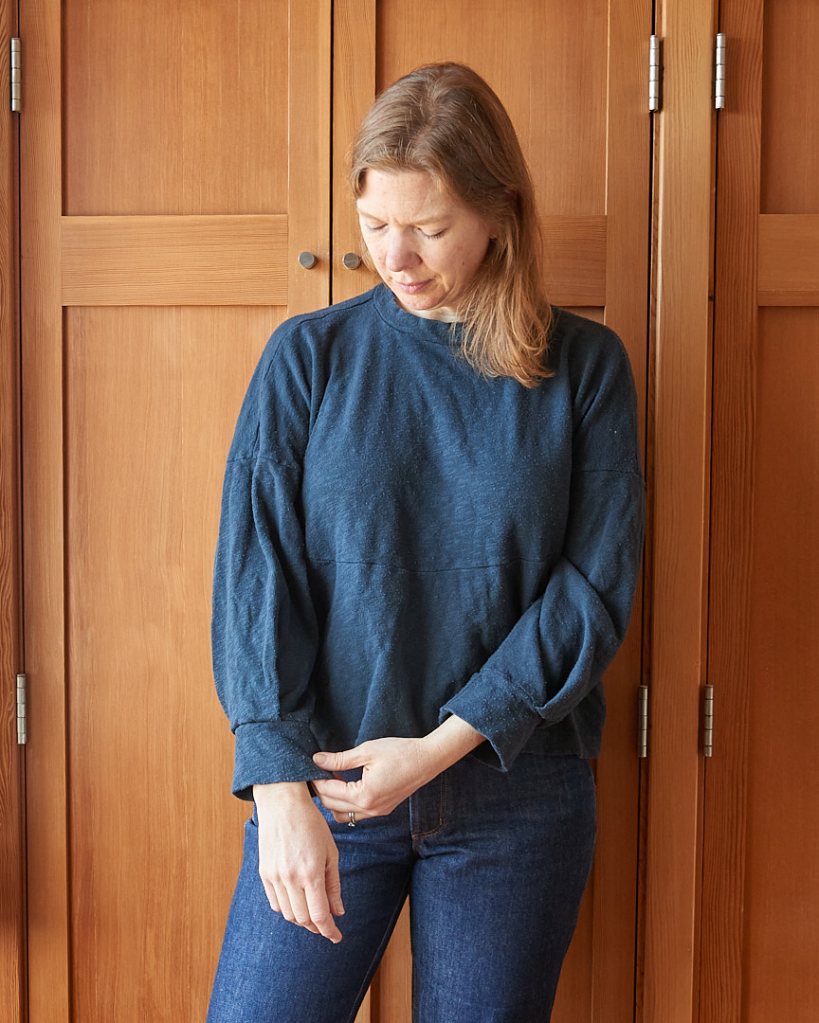
Lightweight fabric, size XS
Sizing down with a lighter weight fabric is my preference. I made a third teal version with a drapey, cotton/rayon sweatshirt fleece that is also 270 gsm (8 oz), similar in weight to the navy one.
But unlike the previous navy version, I think this teal Wren is very successful. Sizing down helps to keep the volume more manageable — I don’t feel like I’m drowning in fabric. I also added a contrast piping around the yoke to emphasize this design element. I really love the result:
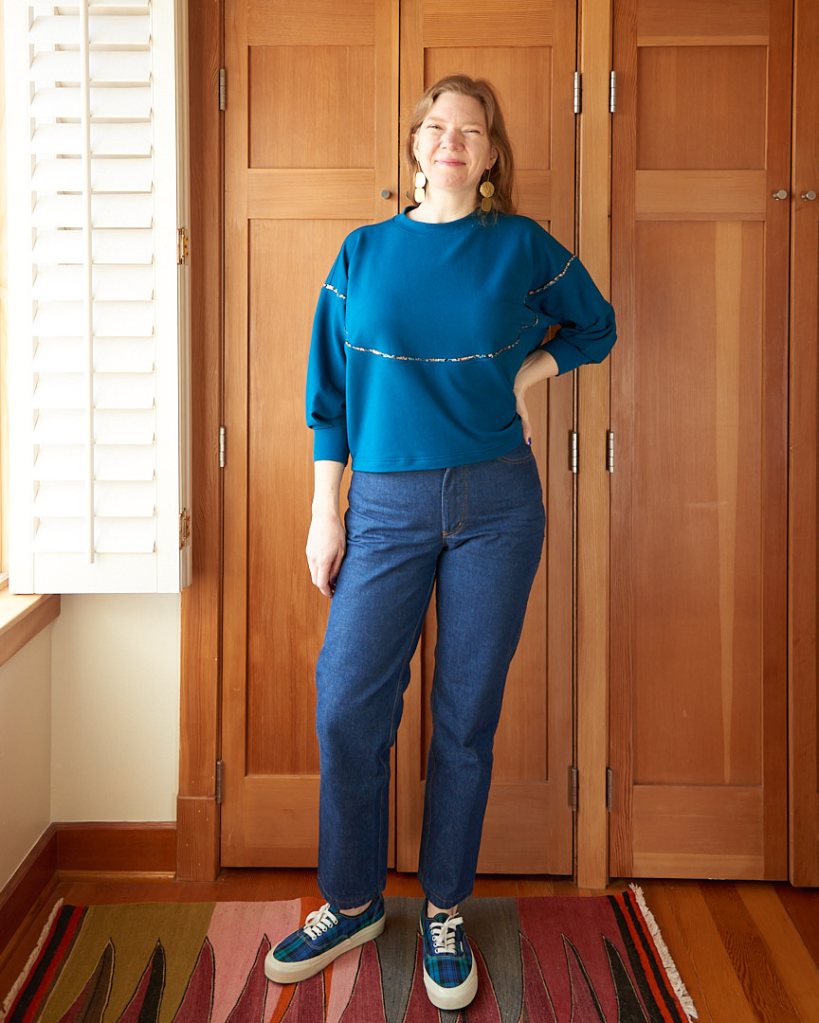
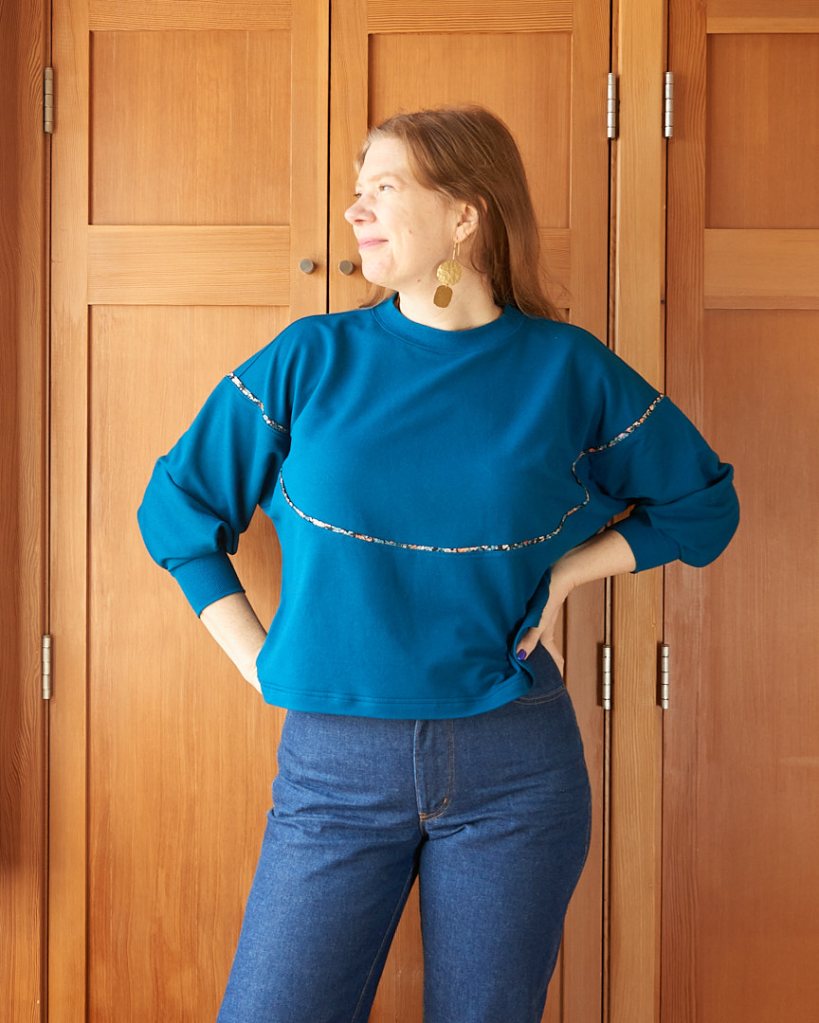
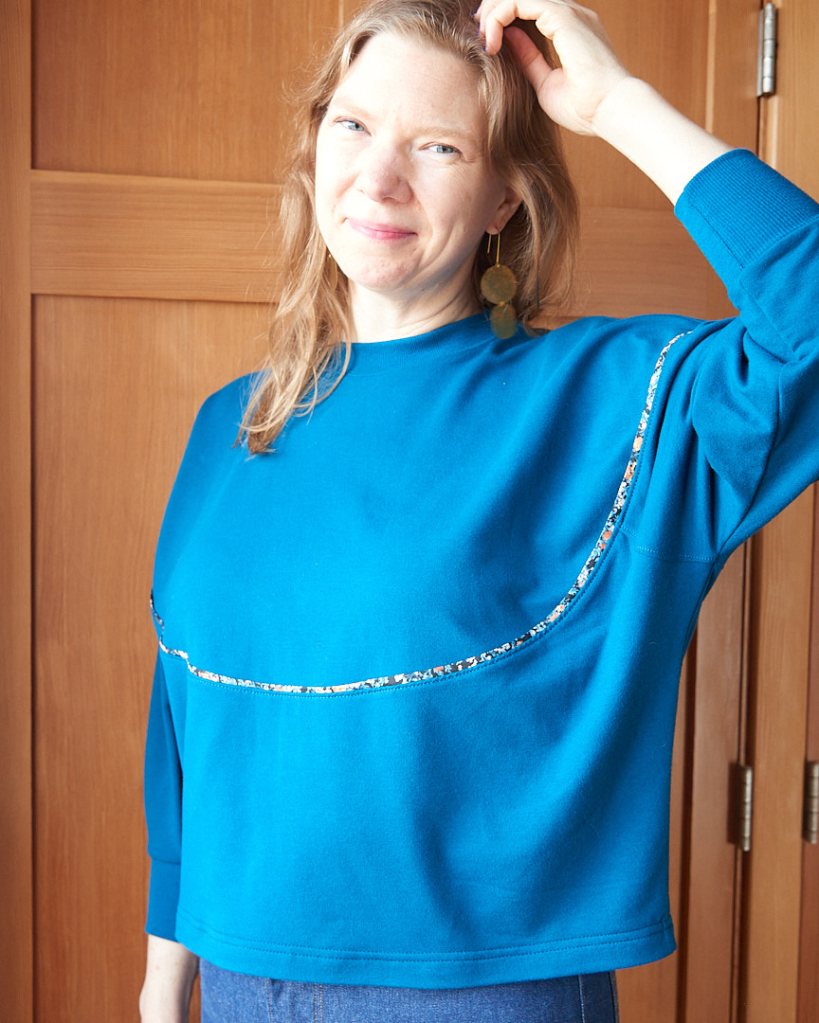
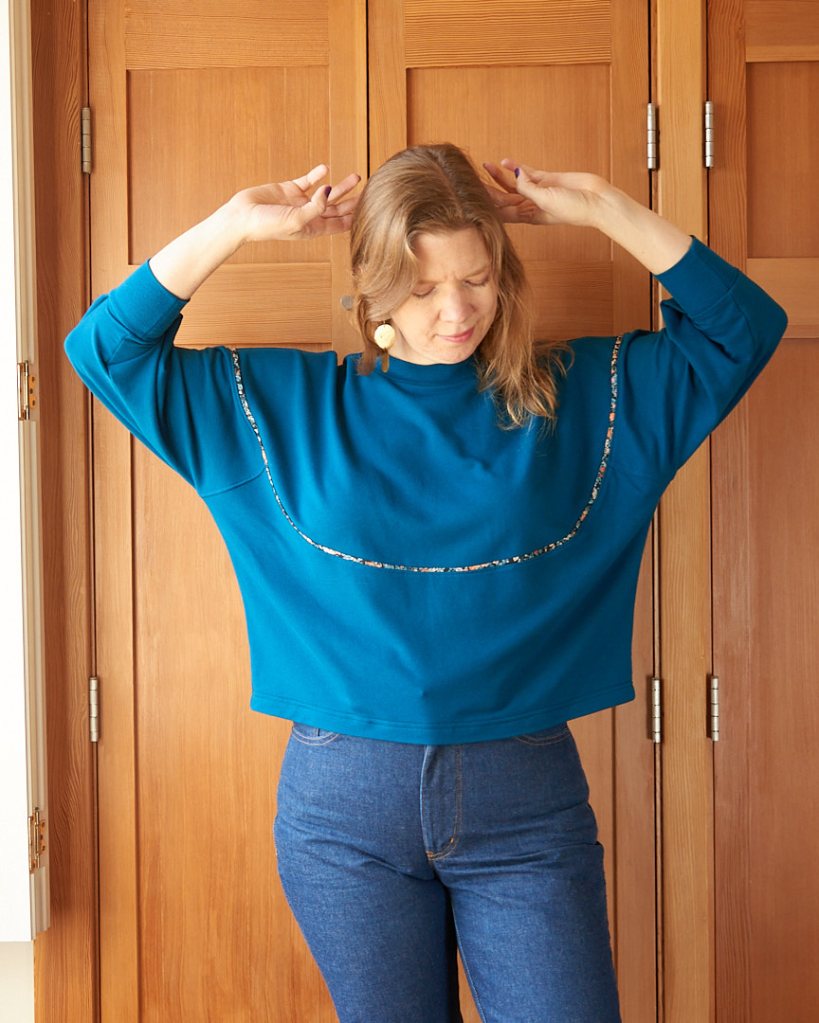
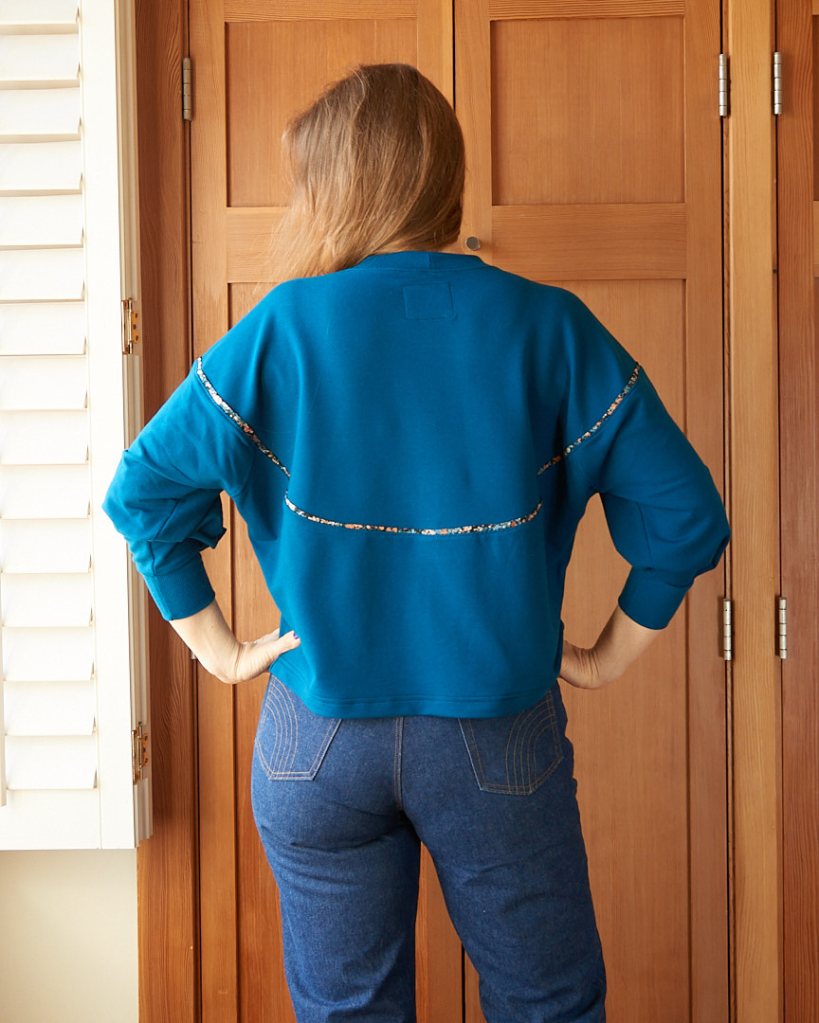
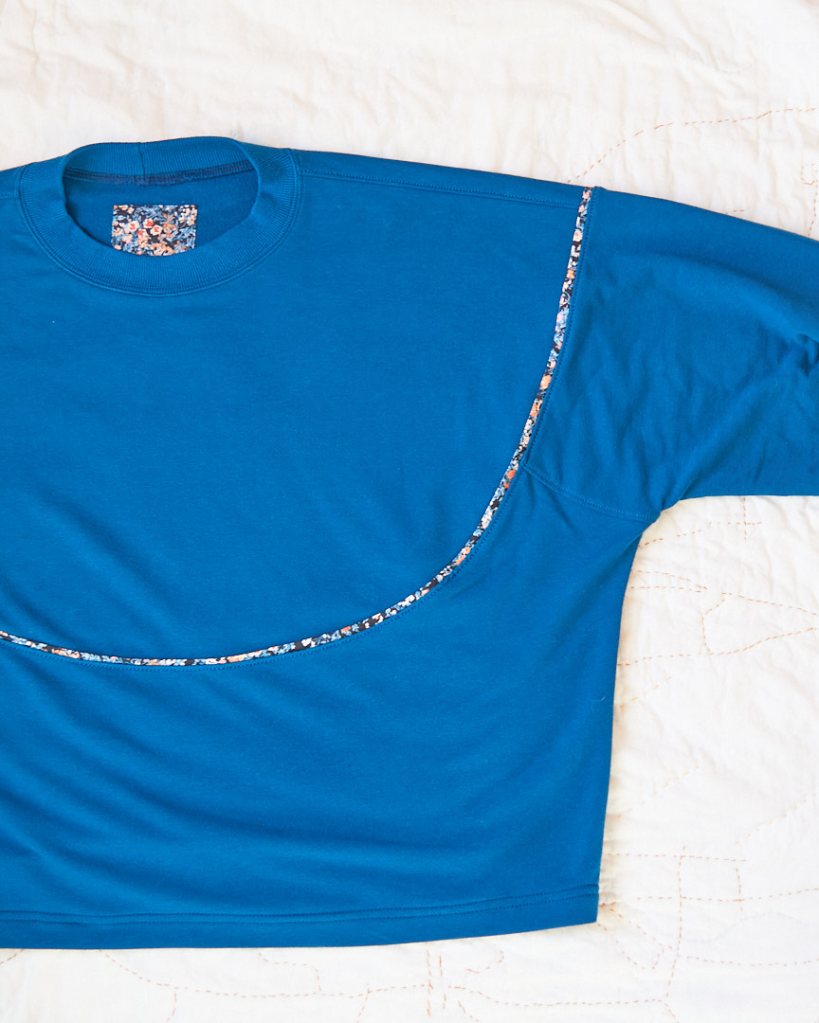
Ultra lightweight mesh, size XS
Just for fun, I made a semi-transparent Wren out of a deadstock wool mesh that I had lying around. Even though I don’t wear much black anymore, this wool version is a close second to my favorite heavyweight green Wren, and they are VERY different.
This wool mesh is ultra lightweight (around 2oz / 70gsm), and it has a diaphanous quality to it. I added a contrast neon thread in my serger, then chainstitched all of the serged seams down in a faux flat-lock stitch. The result is fully reversible, although I much prefer the “wrong” side because you can see the beautiful design lines in neon.
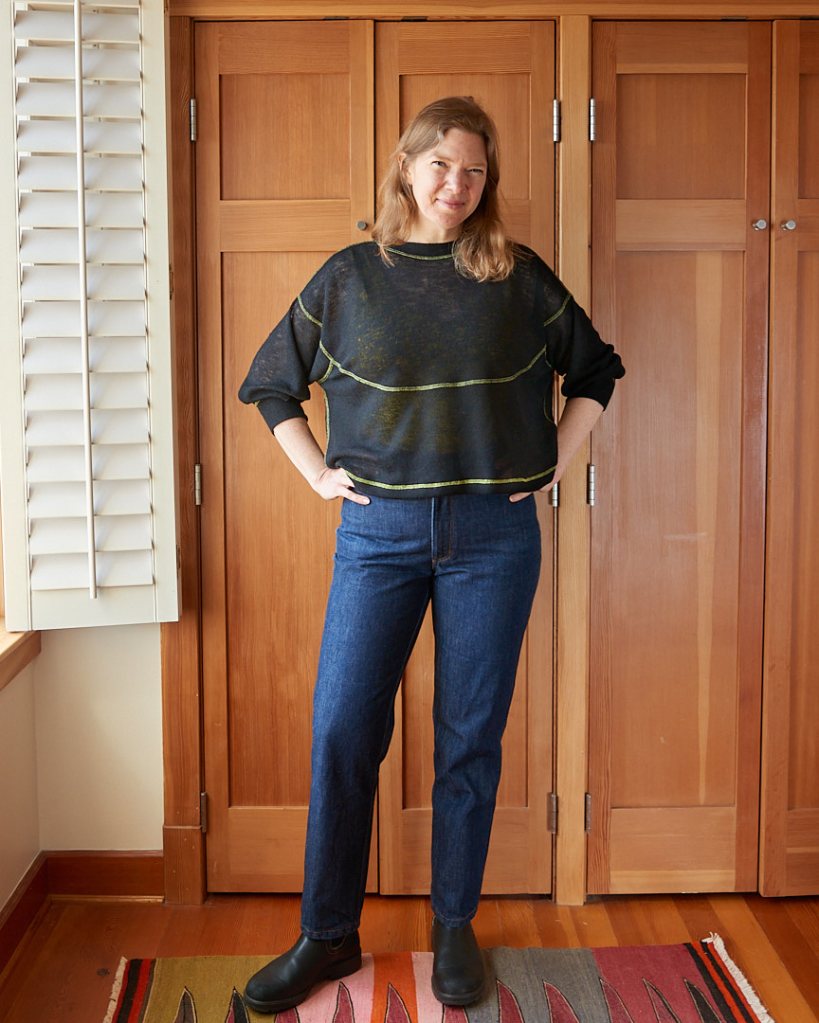
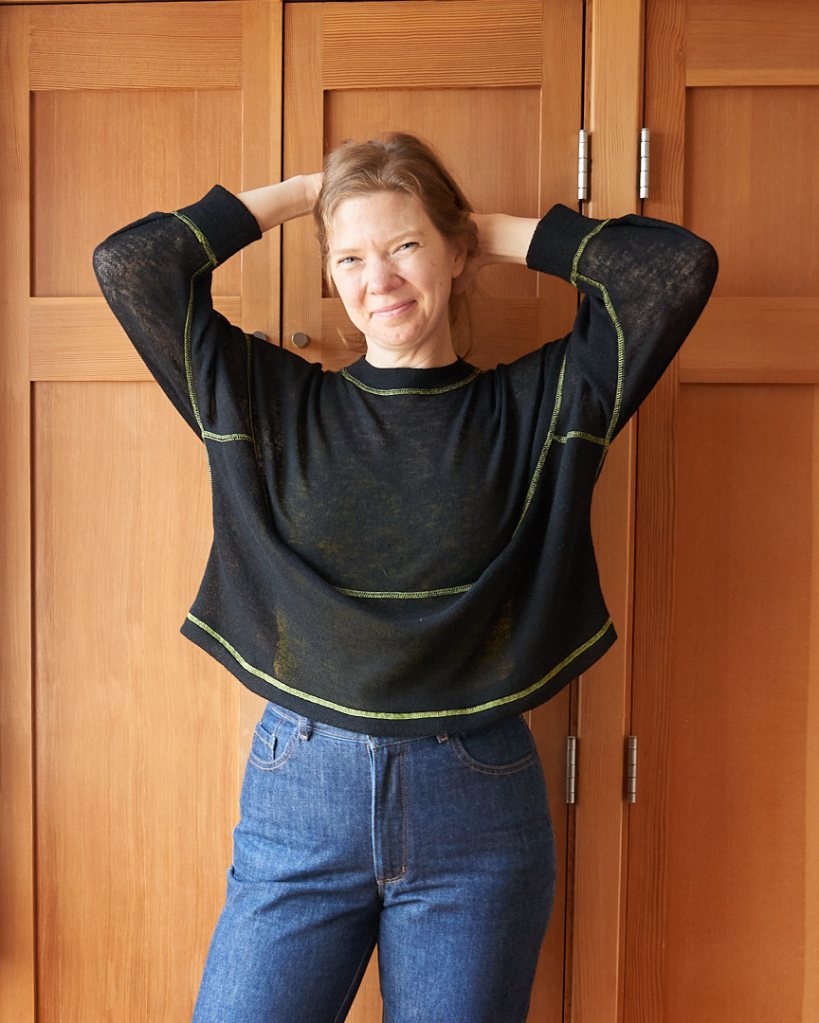
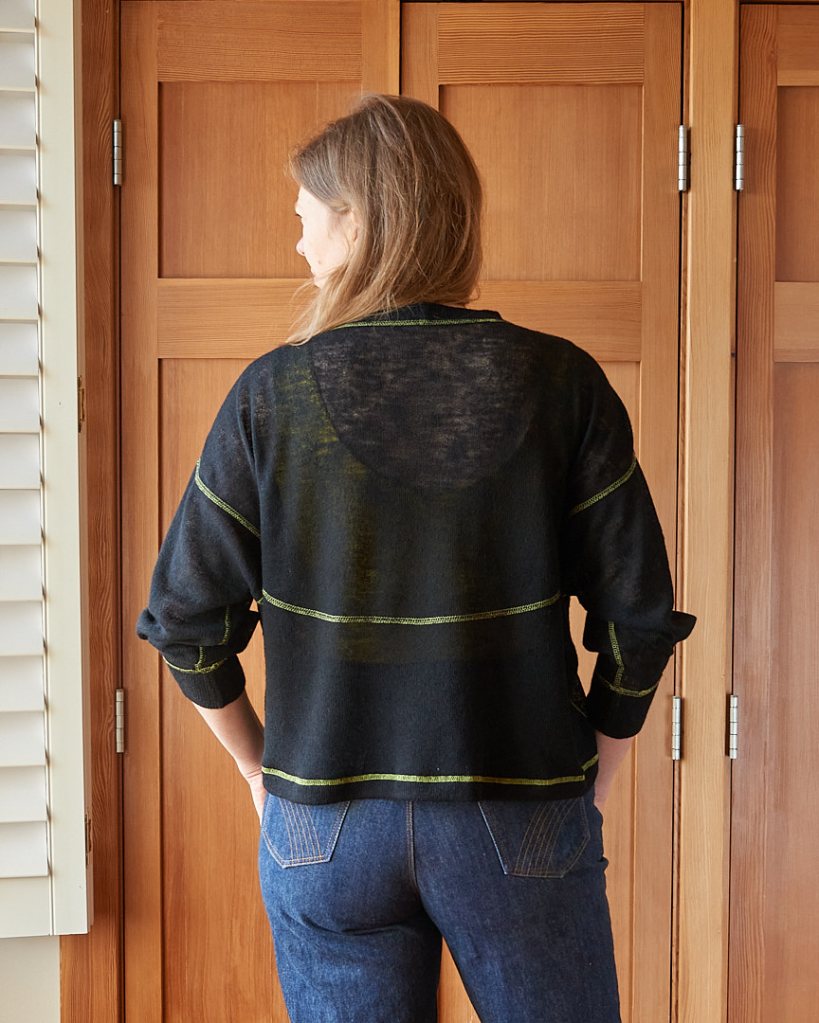
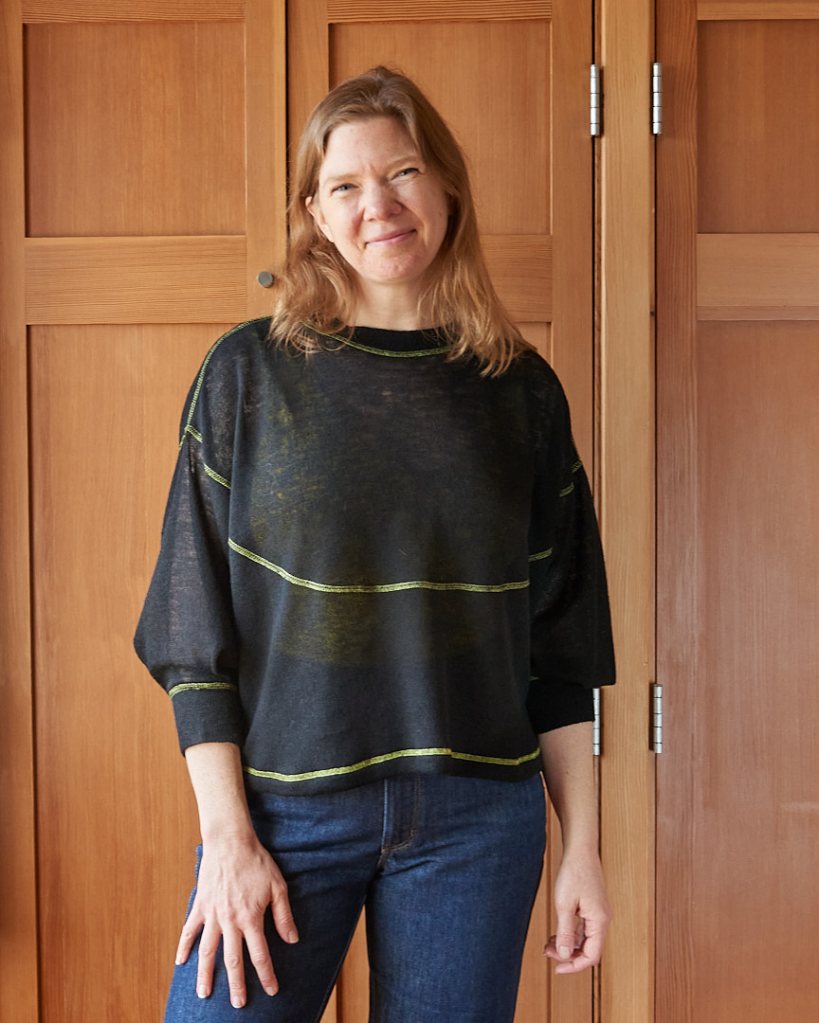
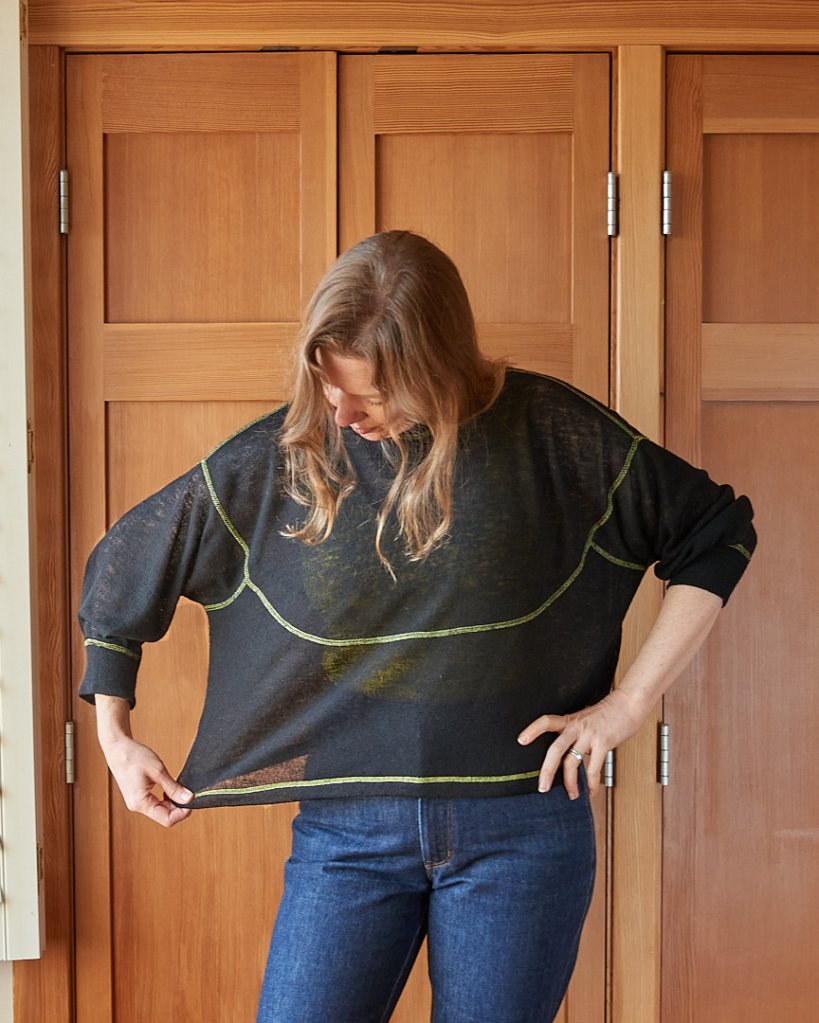
Final thoughts
After making so many versions of this pattern, I love it even more than when I started. Fabric choice can really make or break the final fit though, and I think Wren does best when you use a thick, heavyweight fleece with low drape and high structure. If your fabric is thinner with some drape, I’d recommend sizing down several sizes.
One may also need to modify the neck and cuff openings depending on fabric choice, too. For my smaller versions in lightweight fabrics, I used the XS cuff but then trimmed at least an inch out of the circumference for a snug fit around my arm. I did the opposite when using thick fabric.
With the right tweaks and some careful fabric choices, this pattern can work hard and cover a lot of bases in one’s wardrobe. Now that I have 4+ Wrens in my closet (yes, there is a 5th Wren that never got photographed), I think I’m good on sweatshirts for quite a while!
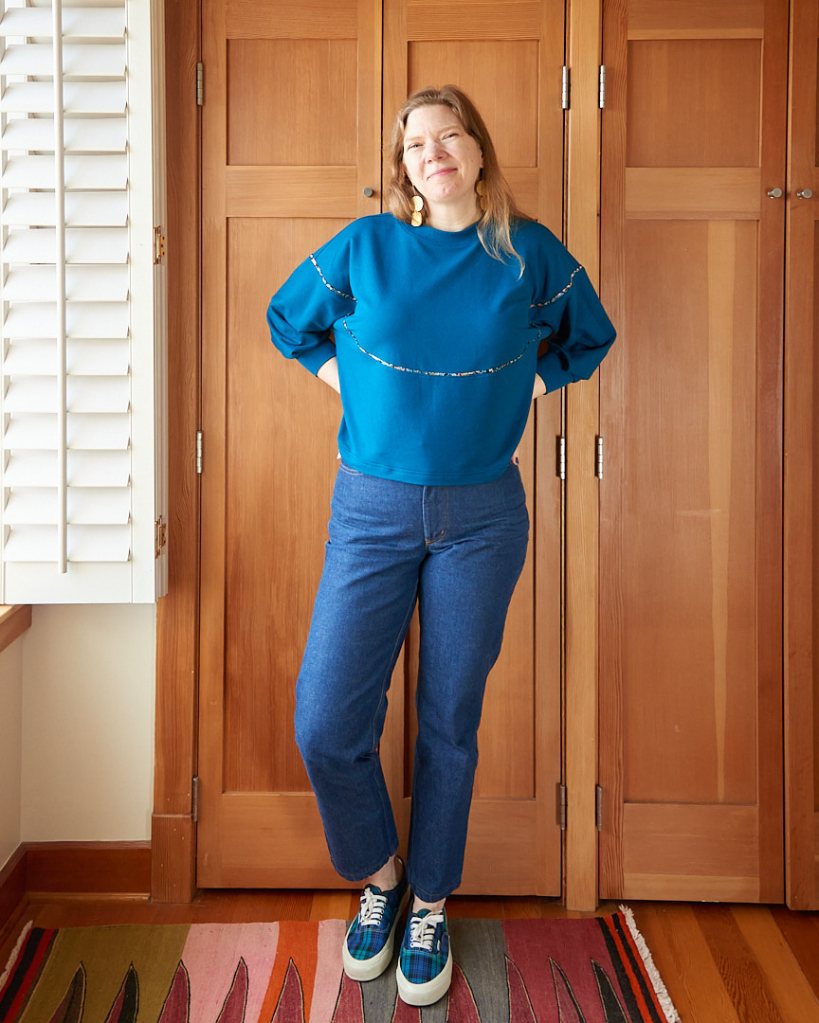
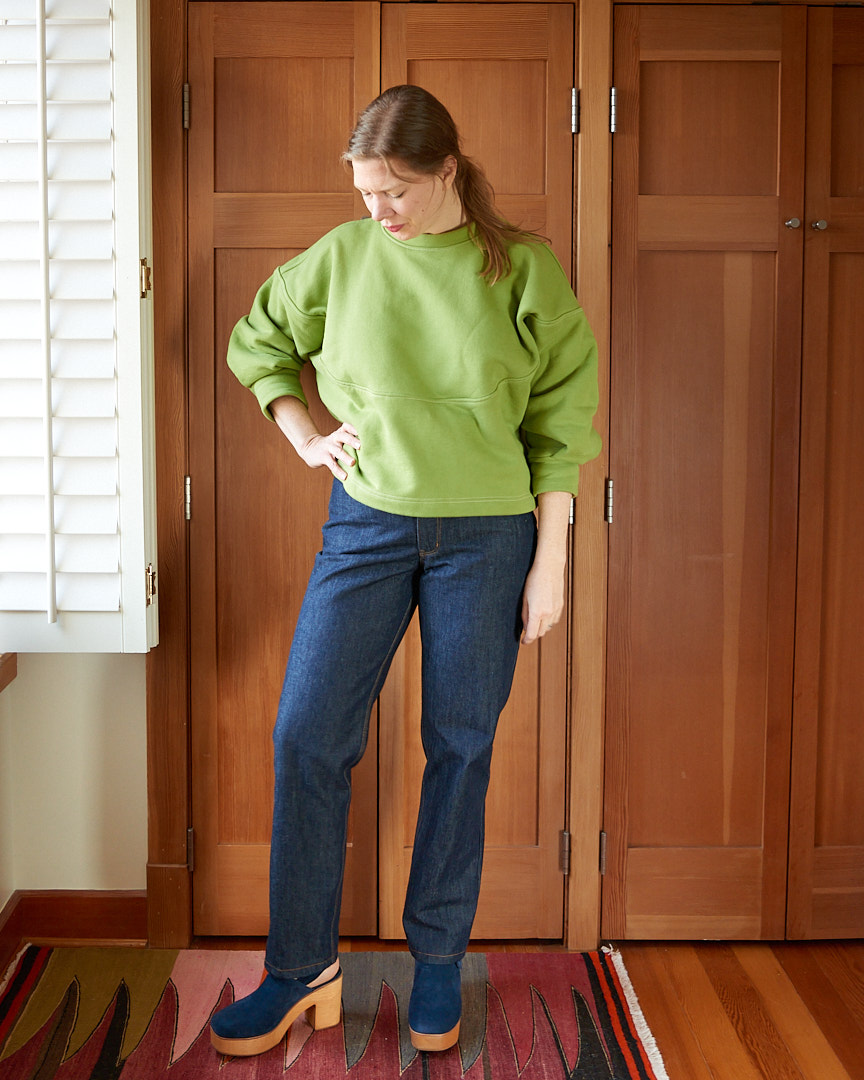
Leave a comment